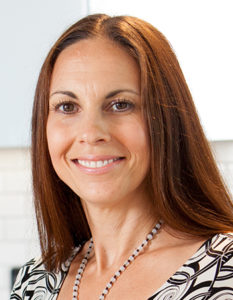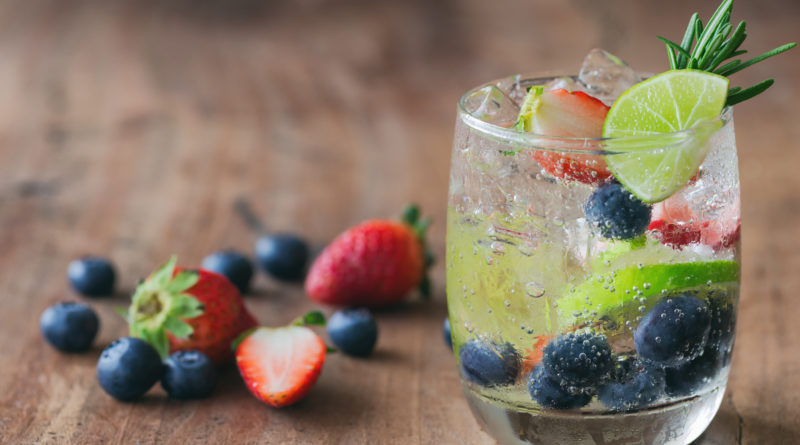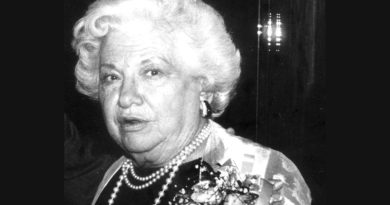Keeping Cool with Chemo
Staying hydrated helps those undergoing treatment, but it can be tough to do in summer
Editor’s Note: This column is the second part of a series on Carey Stites’ battle with breast cancer. Read part one here.
 By Carey Stites
By Carey Stites
Staying cool during the unforgiving Texas summer can be a challenge for even the healthiest individuals, let alone a cancer patient undergoing chemotherapy. Cancer treatments can cause a plethora of negative side effects ranging from nausea and vomiting to gastrointestinal distress and loss of appetite. During the summer months when temperatures reach into the 90s and higher and the sun is full force, cancer patients can face additional risks that harm their health or amplify the side effects of treatment. With this in mind, how do you stay cool during chemo?
Hydration, Hydration, Hydration
When dealing with extreme Texas heat, one of the biggest challenges for most cancer patients is maintaining adequate hydration. Having a debilitating disease combined with the side effects of treatment often alters typical eating and drinking patterns. Chemotherapy can alter taste and smell, along with causing gastrointestinal issues such as diarrhea or constipation that ultimately result in dehydration. Patients receiving radiation therapy or immunotherapy can also have these unpleasant side effects as well. As I’ve experienced, it’s a challenge to drink water when it tastes like a penny is constantly sitting on your tongue.
The body relies on sweat to regulate temperature through evaporation, however, by the time you feel thirsty due to this evaporation and urination, you are likely already are somewhat dehydrated. Adequate water allows the blood to effectively transport nutrients and oxygen, lubricate joints, keep mucus membranes moist and regulate heart rate and blood pressure. For cancer patients, these functions are vital during chemotherapy as some drugs cause intense joint pain and dry nose and mouth. In fact, water is essential to assisting the clearance of certain chemotherapy drugs, and the kidneys rely on water to filter out these components.
For some, it can be a challenge to consume enough water on a daily basis; this is where creative options become important. A “general” goal for most patients is the traditional eight 8-ounce glasses of water per day, however, this amount varies from person to person as well as on the type of chemotherapy infusion given. Not everyone enjoys plain water, though, and luckily there is an abundance of flavored, sparkling and fruit/vegetable infused water to choose from. Another idea is to add ¼ to ½ cup fruit juice to a large pitcher of water or try low-sugar sports drinks and low-sugar popsicles to keep cool.
Hydrating Fruits and Vegetables
During chemo, something as simple as water can make a person nauseous. This is a challenge in terms of hydration, however, many fruits and vegetables contain ample amounts of water and may be tolerated better (everyone is different). For example, watermelon is 92% water, strawberries are 91% water and cantaloupe is 90% water. Other highly hydrating fruits and vegetables include grapes, peaches, star fruit, zucchini, celery and bell peppers. Lettuce is 96% water and cucumbers are 95% water.
Hot Flashes and Night Sweats
Believe me, it is tough enough going through chemotherapy, but add in sporadic flushing, getting hot throughout the day and waking at night drenched in sweat, and it sometimes feels unbearable. Unfortunately, the dreaded hot flashes and night sweats can be a common occurrence during chemo when taking drugs like Taxol.
In women, the source of the hot flashes and night sweats is thought to be hormonal fluctuations, such as a decrease in estrogen. A handful of chemotherapy drugs can put women into medical menopause and for others, the removal of the ovaries as a part of the treatment plan results in permanent menopause. This is extremely challenging on a 100-degree summer day!
Whether short-lived or permanent, these annoying side effects can be managed to an extent. If you notice certain foods or drinks trigger hot flashes, avoid them. Alcohol, caffeine and spicy foods can be culprits so it is best to make a mental note if the morning cup of coffee, the after work glass of wine or the salsa at dinner results in your face turning beet red and sweat dripping down your face. If this is a short-term issue, gradually reintroduce the “triggers” back into your diet; for the long term, try to find worthy substitutes that save you from a literal meltdown.
Sip a Cold Drink
Sips of a cold drink can do wonders! When you feel the hot flash tingle coming on or start to feel warm, sip cold water (or any cold beverage) and be sure to head inside if you can to avoid the summer heat. Another tip: keep your favorite cold beverage next to your bed at night and take a drink if you wake up feeling hot. For some, eating a sugar-free popsicle or other ice-based treat before bed can reduce night sweats and result in a more comfortable sleep.
Cooling Products
With a quick search on the internet, you will see the massive amount of cooling products available for people undergoing chemotherapy. Socks with gel packs not only keep you cool during the heat of the summer, but also help to combat the neuropathy of the feet associated with chemotherapy drugs. Large cooling pillows, neck pillows, cold caps, hats with built-in fans, small handheld fans and ice mitts are innovative products on the market to help cancer patients beat the heat.
The heat can be brutal for all of us, however, the effect is amplified for cancer patients on chemotherapy, and while the summer calls for outdoor fun and activities, staying cool is critical for those undergoing treatment. Implementing strategies like these to reduce side effects can help people with cancer remain on treatment and have a better quality of life, even in the Texas heat!
Carey Stites, MS, RD, LD, CPT, is a registered and licensed dietitian in Harker Heights. She obtained a master’s degree in nutrition and dietetics from Texas Tech University has been a practicing dietitian since 2001. Carey is also an AFAA certified group fitness instructor and personal trainer; she has promoted health and wellness through presentations, classes, writing and cooking demonstrations all over Texas.



